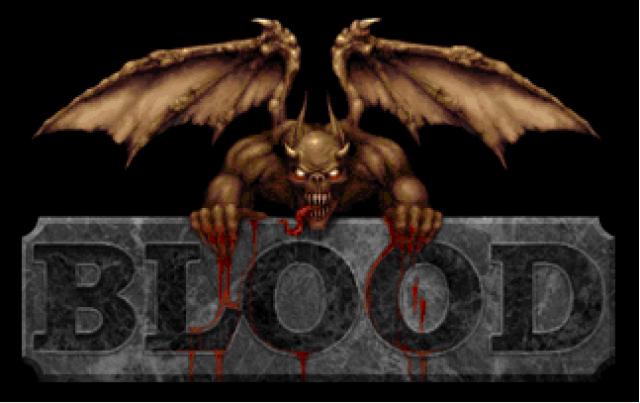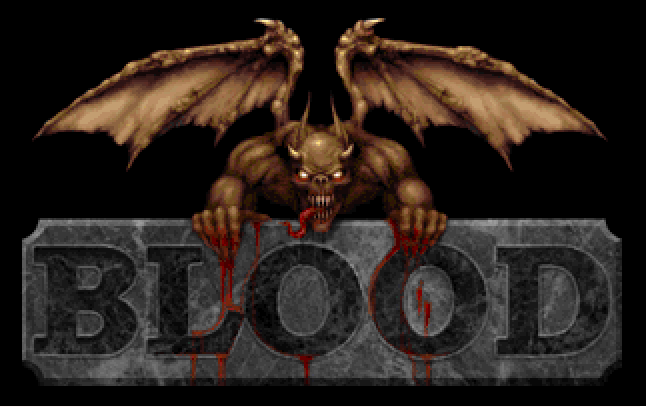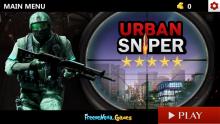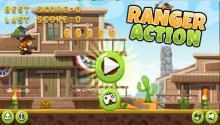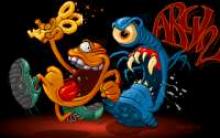Blood
Press Keyboard right side: Alt+Enter keys to switch to full screen game play, and Alt+Enter keys to return.
How to play Blood
Each game uses different controls, most DOS games use the keyboard arrows. Some will use the mouse.
Blood Description
In single player mode, the player takes the role of Caleb in his quest for revenge against his former master by navigating levels in episodes, looking for an exit, until the "boss" level where the player must defeat a large opponent. The episodes are ordered to follow the game's storyline, but can be played in any order.
Blood's gameplay is similar to other classic FPS games like Doom: the player must activate switches or seek keys to go through the levels; some larger maps contain up to six different keys. Features include teleporters, traps such as crushing blocks, explosive barrels, lava pits, jumping puzzles, and combination lock doors.
Blood is one of the earliest FPS games to feature alternate or secondary attack modes for its weapons; most weapons in Blood have two different attacks, whereas weapons in previous games usually had only a single type of attack. Blood also has "super secret" areas which are very hard to find or reach and contain large rewards.
Weapons, artifacts, and bonus items appear in Blood. Firearms include a flare gun, sawed-off shotgun, and a Tommy gun, explosive weapons like dynamite and a napalm launcher, a shock rifle named after inventor Nikola Tesla, and several dark magic artifacts, including a Voodoo doll and, most uniquely, an aerosol canisters that can be used as flamethrowers or bombs. It also features a power-up known as "Guns Akimbo", which allowed the player to dual wield certain weapons.
The game features a large quantity of enemies throughout its levels and most of them are hostile, including human members of the Cabal and creatures fighting for the dark god Tchernobog. The most common of these enemies are various types of zombies, undead obese butchers that throw meat cleavers, and cultists with tommy guns and dynamite. There are more difficult enemies such as fire breathing hellhounds, gargoyles, giant spiders, and powerful sub-bosses. The game also features a lesser class of enemies (bats, rats, eels, possessed hands) often referred to as "nuisance enemies" that are not considered threats individually, but can be deadly in large numbers.
Blood, like many FPS games of the time, features multiplayer modes. When it was released, Internet play was not well established, so Blood used modem, LAN or serial cable connections for multiplayer. Modem and serial cable connections only allow two player games, while an IPX network connection can support up to eight players. This can easily be achieved on a variety of platforms that support DOSBox and its IPX modes, coupled with VPN software such as Hamachi. Online multiplayer was also possible via the Total Entertainment Network and DWANGO.[3]
The multiplayer modes consist of the classic deathmatch, known in Blood as "Bloodbath", and cooperative play. Bloodbath matches can be played on specifically designed multiplayer maps or on the levels of the various episodes; the "frag limit" or "time limit" options are available to end matches, as well as the possibility to control respawn mode for weapons and power-ups. A feature of Bloodbath is "The Voice", an audio comment heard upon each frag, that punctuates the death of an opponent often in gory and irreverent terms. "The Voice" is that of Jace Hall, who was CEO of Monolith Productions at the time.
Cooperative gameplay follows the lines of the single player campaign, allowing several players to work together against the computer controlled opponents on the levels of the different episodes.
